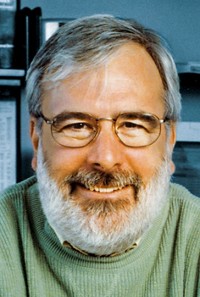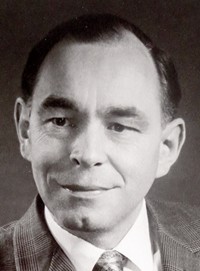Advertisement
Grab your lab coat. Let's get started
Welcome!
Welcome!
Create an account below to get 6 C&EN articles per month, receive newsletters and more - all free.
It seems this is your first time logging in online. Please enter the following information to continue.
As an ACS member you automatically get access to this site. All we need is few more details to create your reading experience.
Not you? Sign in with a different account.
Not you? Sign in with a different account.
ERROR 1
ERROR 1
ERROR 2
ERROR 2
ERROR 2
ERROR 2
ERROR 2
Password and Confirm password must match.
If you have an ACS member number, please enter it here so we can link this account to your membership. (optional)
ERROR 2
ACS values your privacy. By submitting your information, you are gaining access to C&EN and subscribing to our weekly newsletter. We use the information you provide to make your reading experience better, and we will never sell your data to third party members.
Synthesis
Donald M. Jerina
September 26, 2011
| A version of this story appeared in
Volume 89, Issue 39
Donald M. Jerina, 71, a former chief of the Oxidation Mechanisms Section at the National Institutes of Health’s National Institute of Diabetes & Digestive & Kidney Diseases (NIDDK) in Bethesda, Md., died on May 22 from the consequences of a bacterial infection.
Jerina received a B.A. degree in chemistry at Knox College in Galesburg, Ill., in 1962 before earning a Ph.D. in organic chemistry from Northwestern University in 1966 with Robert Letsinger.
Jerina began working at NIH in 1969. He became chief of NIDDK’s Oxidation Mechanisms Section in 1973 and retained that position until 2006.
Jerina’s early career at NIH was highlighted by his mechanistic elucidation (along with NIH colleagues Gordon Guroff and John W. Daly) of the eponymous “NIH shift,” a chemical rearrangement in which a hydrogen atom migrates around an aromatic ring during the biological synthesis of certain neurotransmitters. This work led to a lifelong interest in microsomal oxidations and the role of epoxides as reactive intermediates in biological processes including DNA damage and carcinogenesis.
As an international leader in the field of chemical carcinogenesis, Jerina pioneered research on cancer-causing polycyclic aromatic hydrocarbons (PAHs) that are widespread environmental contaminants, most notably in tobacco smoke, automobile exhaust, and the charred portions of grilled foods. Together with his longtime NIDDK colleague Haruhiko Yagi, he developed synthetic methods to prepare PAH-modified DNA sequences to study their three-dimensional structures by nuclear magnetic resonance and X-ray crystallography. Jerina published more than 500 scientific papers.
He was awarded the ACS Hillebrand Prize in 1979, the B. B. Brodie Award for Research in Drug Metabolism from the American Society for Pharmacology & Experimental Therapeutics in 1982, and the Polycyclic Aromatic Compound Research Award of the International Society for Polycyclic Aromatic Compounds in 1999. He joined ACS in 1963.
Jerina is survived by his daughter, Julianne Marcus; son, Derek; and grandson, Adam.




Join the conversation
Contact the reporter
Submit a Letter to the Editor for publication
Engage with us on Twitter